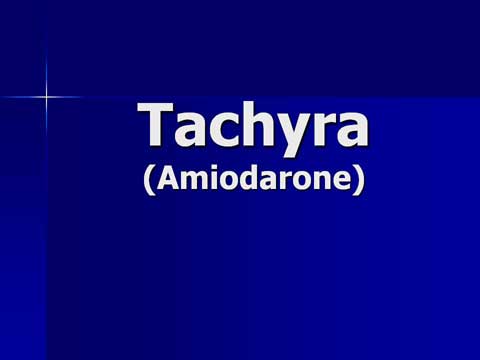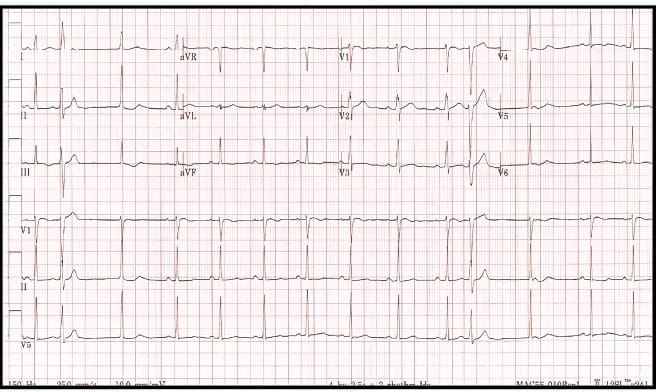Panelists: Dr. Stavros Mountantonakis (Electrophysiologist, Northwell Health), Dr. Julius Ejiofor (Cardiac Surgeon, Baylor Scott & White Health), Dr. Kamala Tamirisa (Electrophysiologist, Texas Cardiac Arrhythmia), Dr. Kristie Coleman (Director, Cardiac Electrophysiology Research)
Part 1: Foundational Concepts, Pulse Field Ablation, and Equity in Care
Key Highlights
Introduction:
The opening segment of the clinical spotlight session was moderated by Dr. Stavros Mountantonakis, during which foundational concepts in atrial fibrillation (AF) management were discussed. Emphasis was placed on advancements in monitoring, the evolving role of ablation strategies, and the importance of addressing inequities in care delivery.
Pulse Field Ablation (PFA):
The session was initiated with a polling question related to pulse field ablation (PFA), a non-thermal ablation technique in which selective cardiomyocyte apoptosis is induced via electrical fields. PFA was presented as a procedural advancement that improves procedural efficiency and reduces complication rates. However, current ablation targets and clinical guidelines have not yet been altered by its adoption.
Case Discussions – Tailored Rhythm Control and Anticoagulation:
-
A clinical scenario featuring a 55-year-old triathlete with paroxysmal AF and a structurally normal heart was discussed. Rhythm control strategies, initiation of anticoagulation, and symptom-directed management were explored. Patient-reported functional limitations and wearable-based monitoring tools were emphasized as key components in guiding therapy.
-
In contrast, a 65-year-old male with end-stage renal disease (ESRD) on dialysis and multiple comorbidities was presented. Anticoagulation options were considered based on pharmacokinetic profiles and safety data. Apixaban 5 mg BID was identified as the preferred option, supported by findings from trials such as EMANATE-AF. Warfarin was considered acceptable, whereas rivaroxaban and edoxaban were not recommended for use in ESRD.
Equity in Care and Outcome Metrics:
Institutional disparities in access to ablation procedures were also addressed. A scenario examining equity-focused interventions highlighted that equal catheter ablation rates across demographic groups—adjusted for clinical need—served as the strongest metric of success.
Risk Stratification in ESRD:
Dr. Kamala Tamirisa’s commentary on the ESRD case was delivered with a focus on CHA₂DS₂-VASc score limitations in renal populations. Risk stratification tools such as ATRIA and GARFIELD-AF, which incorporate renal function, were discussed as more accurate alternatives. AF management in ESRD was described as clinically complex, warranting individualized anticoagulation and careful renal monitoring.
Lifestyle and Risk Factor Modification:
The importance of lifestyle modification in AF management was underscored in the concluding segment. Evidence from Prash Sanders’ group in Australia was cited, showing that a weight loss of ≥10% was associated with delayed progression of AF and potential reversion to paroxysmal AF. Additional modifiable risk factors—including hypertension, diabetes, sleep apnea, and alcohol use—were highlighted, in alignment with current guideline recommendations.
Conclusion:
A comprehensive overview of technical innovations and patient-centered care strategies was provided during this session. Foundational principles in AF management were reviewed, laying the groundwork for more in-depth case discussions in subsequent sessions.
Part 2: Persistent AF with Cardiomyopathy: Navigating Lower Success Rates and Complex Strategies
Key Highlights
Introduction:
In the second part of the clinical spotlight series, a detailed exploration was undertaken into the management of subclinical atrial fibrillation (AF), the clinical use of wearables, and the expanding role of catheter ablation. The session was informed by pivotal trials and recent guideline updates, and patient-specific decision-making was emphasized throughout.
Subclinical AF: Case and Evidence Review:
The discussion was initiated with a case involving a 64-year-old asymptomatic female with sinus node dysfunction and a dual-chamber pacemaker. Upon interrogation, three short-duration subclinical AF episodes were detected (5–45 seconds across two months). Despite the absence of symptoms, her borderline CHA₂DS₂-VASc score raised the question of initiating anticoagulation.
Several landmark trials were cited:
-
In the ASSERT trial, a significant increase in stroke risk was associated with atrial tachyarrhythmias of ≥6 minutes.
-
The MOST trial reported a 2.5-fold increase in risk for clinical AF and stroke in patients with atrial high-rate episodes of ≥5 minutes.
-
In contrast, the NOAH-AFNET 6 trial demonstrated no reduction in stroke or cardiovascular events with edoxaban use, but a rise in bleeding risk was observed.
-
The ARTESiA trial showed that while apixaban reduced stroke rates in subclinical AF, this was counterbalanced by a significant increase in major bleeding.
-
As a result, anticoagulation was not recommended for brief, asymptomatic subclinical AF episodes. Instead, ongoing monitoring was advised, with stronger consideration given if episode duration exceeds 6 minutes or if the CHA₂DS₂-VASc score is elevated.
Wearables and AF Detection:
The use of wearable technology in AF detection was addressed by Dr. Christy Coleman. It was clarified that the Apple Watch’s AF algorithm relies on intermittent sampling (1-minute intervals every 2 hours) and requires five irregular readings over 48 hours to generate an alert. It was emphasized that Apple Watch notifications should not be used for clinical decision-making unless ECG confirmation is obtained. Formal rhythm documentation was recommended to guide treatment.
Catheter Ablation: Indications and Advances:
-
A subsequent case involving a 49-year-old woman with symptomatic paroxysmal AF was discussed. The appropriateness of continuing medications versus proceeding with catheter ablation was debated. According to the 2023 guidelines, catheter ablation was granted a Class I recommendation for symptomatic paroxysmal AF—superior to antiarrhythmic drugs, none of which received a Class I rating.
-
While long-term success rates remain modest (~65–70% at 1 year), recent advances such as pulse field ablation (PFA) were highlighted. Traditional thermal ablation was associated with a ~10% complication rate, but this risk has been reduced to 1–2% with PFA, which also shortens procedural times due to more efficient energy delivery. Risks such as esophageal injury, phrenic nerve damage, and tamponade have been markedly lowered.
AF as a Progressive Disease: The Role of Early Intervention:
AF was described as a progressive disease, and it was emphasized that early intervention with catheter ablation and lifestyle modification may help prevent disease advancement. When applied during paroxysmal stages, these strategies were presented as tools for disease reversal.
Persistent AF and Cardiomyopathy: A Complex Case:
-
A second case was discussed involving a patient with persistent AF and mild cardiomyopathy (EF ~40%). While catheter ablation was acknowledged as a viable treatment, it was noted that success rates are lower (~60%), and effective ablation targets remain unclear.
-
Adjunctive ablation strategies—such as posterior wall isolation and rotor mapping—have been studied, but no consistently superior technique has been established. Therefore, a tailored, patient-specific approach was advised for such complex cases.
Impact of Social Determinants in AF Management
Key Highlights
In the third part of the session, two real-world AF cases were discussed to illustrate how social determinants of health (SDOH)—including cost, access, and language barriers—can hinder evidence-based atrial fibrillation (AF) care, despite clear clinical guidelines. It was emphasized that patient-centered, equitable strategies must be prioritized alongside medical interventions.
Case 1: Anticoagulation Barriers in a High-Risk AF Patient
Patient: Mr. Jackson, a 68-year-old African American truck driver
-
Clinical Details:
-
Diagnosed with AF and history of TIA
-
CHA₂DS₂-VASc score ≥4 indicating high stroke risk
-
Initially started on warfarin due to inability to afford a DOAC
-
Challenges Faced:
-
Therapeutic INR levels were not maintained due to lack of access to Coumadin clinics
-
A disabling stroke was suffered before specialty care could be received
-
Panel Consensus:
-
DOACs were preferred over warfarin, especially where INR monitoring was impractical
-
A pharmaceutical assistance-supported DOAC was recommended
-
Home-based telemonitoring was advised to support adherence
-
Catheter ablation was considered after stabilization
-
Realistic, individualized anticoagulation plans were strongly emphasized as foundational to AF care.
Case 2: Multilayered Barriers in a Non-English-Speaking Patient with Severe LV Dysfunction
Patient: Ms. Rodriguez, a 56-year-old uninsured Spanish-speaking woman of Peruvian descent
-
Clinical Details:
-
Symptomatic paroxysmal AF
-
Rapidly progressing heart failure (EF 20–25%) with mitral regurgitation
-
CHA₂DS₂-VASc score = 3
-
Barriers Identified:
-
Lack of insurance and access to specialty care
-
Repeated ER visits resulting in job loss
-
Language and health system navigation challenges
-
Recommendations Provided:
-
Enrollment in county-based AF clinics with Spanish-language services and extended hours
-
Access to medication assistance programs for DOAC therapy
-
Use of culturally concordant patient navigators to support follow-up and literacy
-
Early anticoagulation and potential catheter ablation to reverse LV dysfunction were considered but delayed due to access challenges
-
The importance of aligning clinical urgency with system-level interventions was highlighted.
Clinical and System-Level Takeaways:
-
In persistent AF with reduced EF, catheter ablation was given a Class I recommendation in the 2023 guidelines due to mortality benefit.
-
Amiodarone, although commonly used, was noted to have <40% efficacy and long-term toxicity risks, making it suboptimal compared to ablation (~60% success).
-
Pulse Field Ablation (PFA) showed early promise (~74% success in limited trials) with lower complication rates, though it remained under investigation.
-
Barriers such as cost, language discordance, and system complexity were recognized as major obstacles to the application of guideline-based care.
Proposed Solutions:
-
Broader access to medication support programs
-
Expansion of mobile and telehealth infrastructure
-
Implementation of language-concordant services
-
Development of community-integrated care models
Integrating Equity and Multidisciplinary Approaches in AF Management
Key Highlights
The concluding segment of the session focused on the importance of embedding social determinants of health (SDOH) and multidisciplinary collaboration in atrial fibrillation (AF) management. Emphasis was placed on how timely, aggressive, and coordinated care can transform outcomes, especially in underserved patient populations.
Case Follow-Up: Recovery Through Coordinated Intervention
Patient: Ms. Rodriguez
After presenting with symptomatic AF and a severely reduced ejection fraction (EF 20–25%), Ms. Rodriguez’s care was escalated with:
-
A transesophageal echocardiogram (TEE) and cardioversion during hospitalization
-
Comprehensive Spanish-language education
-
Referral to a safety-net electrophysiology (EP) clinic
-
With access expedited through a safety-net hospital system:
-
Catheter ablation was performed
-
Guideline-directed medical therapy (GDMT) for heart failure was initiated
-
A DOAC was continued
-
As a result, left ventricular function improved, and normal daily activities were resumed—contrasting sharply with Mr. Jackson’s outcome.
-
The impact of timely intervention vs. care delay was underscored by the moderator.
Financial and Gender-Based Disparities in AF Care:
-
It was noted that uninsured or underinsured patients respond in two patterns:
-
Incurring medical debt despite financial burden
-
Avoiding or delaying care altogether, resulting in worsened outcomes
-
Gender disparities were also highlighted:
-
Women often present later, with more severe symptoms
-
Female patients remain underrepresented in AF management and intervention strategies
Practice Dilemmas and Evolving Paradigms:
Emerging questions were raised regarding:
-
The optimal timing of ablation in patients with comorbidities (obesity, OSA, diabetes, hypertension)
-
Whether lifestyle optimization should be prioritized before or after EP consultation
-
Management strategies for asymptomatic AF, which may mask disease severity due to reduced physical activity adaptation
-
A parallel care approach—initiating ablation alongside comorbidity management—was advocated, shifting away from ablation as a last resort.
Multidisciplinary AF Centers: A Vision for the Future:
The establishment of comprehensive AF centers was strongly recommended, integrating:
-
Electrophysiologists
-
Heart failure specialists
-
Nutrition and behavioral health services
-
Language support and care navigation
The session concluded with a call for a paradigm shift:
-
Equity-based and prevention-focused AF models must be embraced with the same urgency as coronary artery disease
-
Integration of SDOH into routine care was declared essential—not optional
Key Takeaways:
-
SDOH-informed strategies are critical for improving AF outcomes in vulnerable groups
-
Timely ablation with language-concordant education and DOAC support significantly enhances recovery
-
A multidisciplinary care model is emerging as the standard of care
-
Asymptomatic AF should be actively assessed and rhythm restoration considered to reveal latent symptoms
-
The field is moving from reactive to proactive, equity-driven AF management—both ethically and clinically essential
ACC.25, March 29 - 31, 2025, Chicago




